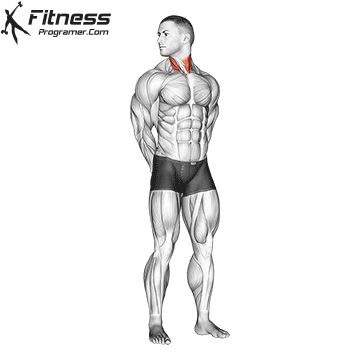Overview of Neck Rotation Stretch
Neck rotation is the movement where you turn your head from side to side, with your chin remaining level. It can be helpful for reducing neck pain, stiffness, and tightness, and can also improve your range of motion.
There are two main types of neck rotation:
- Active rotation: This refers to the voluntary turning of the head without external assistance.
- Passive Rotation: This involves a healthcare professional or therapist gently mobilizing the head to achieve rotation. Passive rotations are often used in physical therapy settings to improve range of motion and reduce stiffness.
How to do:

- Slowly turn your head to one side, aiming to bring your ear closer to your shoulder.
- Maintain a comfortable stretch; avoid forcing your head to an extreme position.
- You should feel a gentle pull along the side of your neck. Maintain this position for 15-30 seconds, ensuring steady and relaxed breathing throughout.
- Slowly return your head to the center position and repeat the stretch on the other side.
- Aim for 2-4 repetitions on each side.
Neck Stretch Benefits
Improved Flexibility:
Regularly performing this stretch helps lengthen and loosen the neck muscles, leading to a wider range of motion in your neck.
It allows us to perform critical tasks such as checking blind spots while driving, tracking moving objects, or simply turning our head during communication.
Reduced Neck Pain and Tension:
Tightness in the neck muscles can contribute to pain and discomfort. By maintaining the flexibility and mobility of the neck through rotation exercises, you can reduce the risk of developing stiffness or pain in the neck area, especially if you have a sedentary lifestyle or spend long hours in front of a computer.
Enhanced Posture:
Poor posture, especially hunching forward, can strain the neck muscles. Stretching your neck regularly encourages proper spinal alignment and can lead to better overall posture.
Stress Relief:
The cervical and shoulder regions are common areas where tension related to stress accumulates. Neck rotation stretches promote relaxation in these muscles, contributing to a sense of calm and potentially reducing stress levels.
Neck Rotation Muscles Worked

